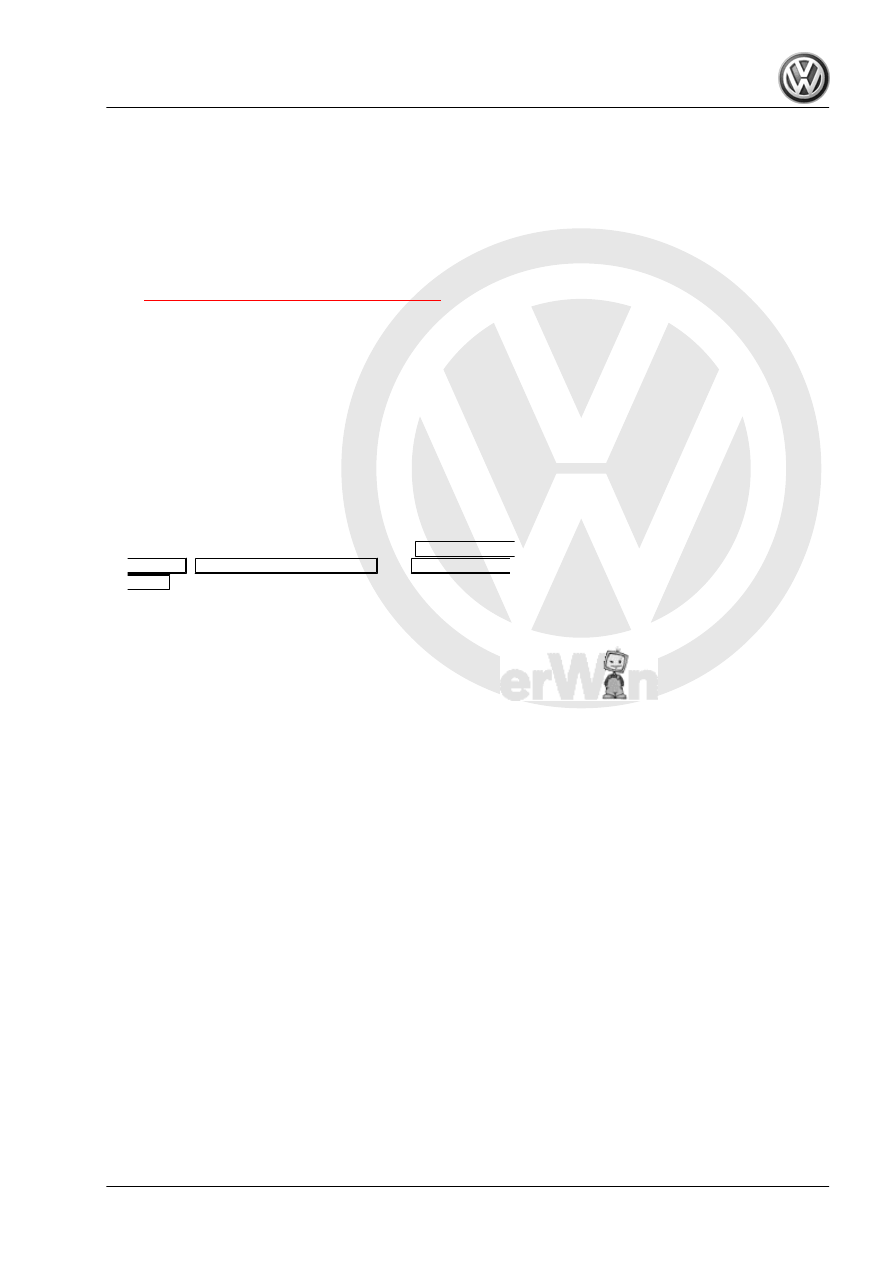Volkswagen Golf / Golf GTI / Golf Variant. Manual - part 612

♦ Cover or plug unpacked components if repairs cannot be per‐
formed immediately.
♦ Only install clean components: Remove the replacement parts
from their packaging just prior to installing them.
♦ Always replace seals and gaskets.
♦ Coat O-rings with ATF before inserting to prevent crushing
rings during installation.
♦ After installing check the ATF level and if necessary fill. Refer
⇒ “7 Automatic Transmission Fluid”, page 73
3.3
General Repair Information
♦ Carefulness, cleanliness and the correct tools are required for
transmission repairs to be successful. The usual basic safety
precautions also, naturally apply when carrying out vehicle re‐
pairs.
♦ A number of generally applicable instructions for individual re‐
pair operations, which are otherwise mentioned at various
points in the repair procedure, are summarized here. They
apply to this repair manual.
Guided Fault Finding, On Board Diagnostics (OBD) and Test In‐
struments
♦ Before servicing the transmission, determine the cause of the
fault using the Vehicle Diagnostic Tester in
Guided Fault
Finding
,
Vehicle Self-Diagnosis
and
Test Instru-
ments
.
Tools
A complete list of special tools and workshop equipment used in
the repair manual can be found at the beginning of each repair
section and in its corresponding binder: Listed “Special tools and
workshop equipment”.
Often times there are questions when a bolt has a low tightening
specification. Use Torque Wrench 1783 - 2-10Nm - VAG1783- to
tighten these bolts.
Transmission
♦ Do not run the engine and do not tow the vehicle if the trans‐
mission cover is removed or if there is no transmission fluid
inside the transmission.
♦ Always clean the connection points and the area around them
first, and then loosen them.
♦ When installing transmission, make sure centering sleeves
are correctly seated between engine and transmission.
♦ With the transmission removed, secure the torque converter
so that it cannot fall out.